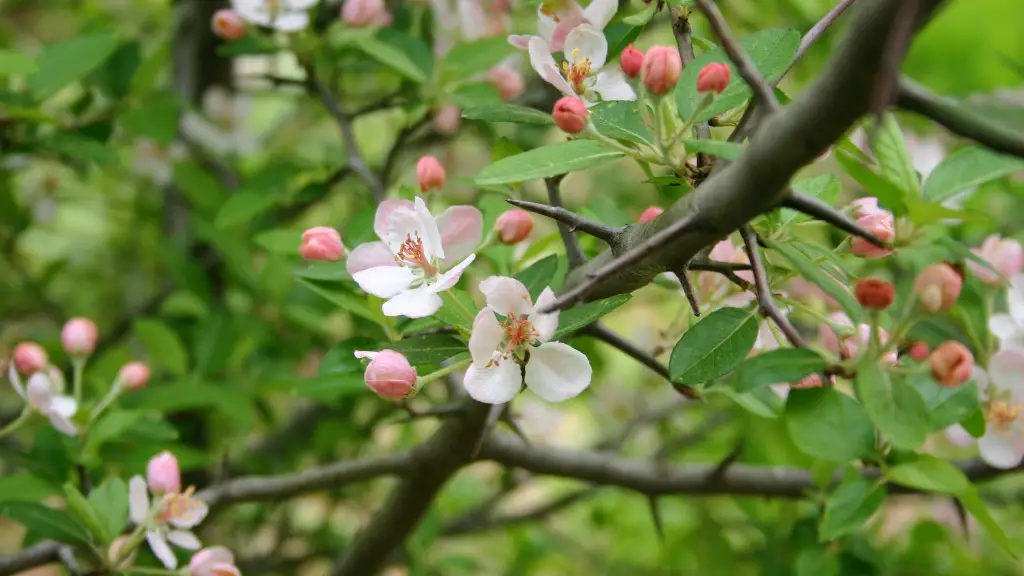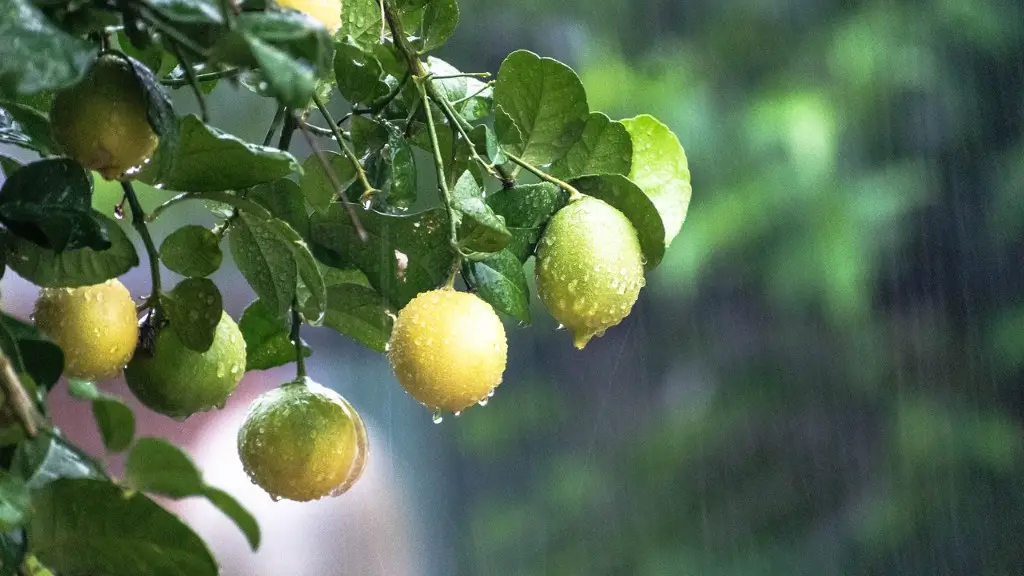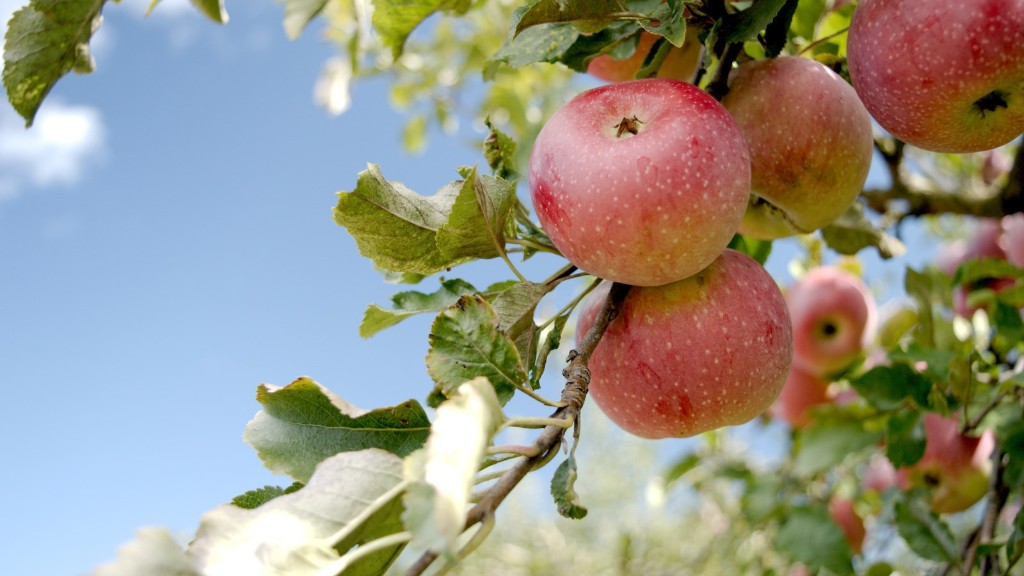Pruning an apple tree is an important part of its care and maintenance. Large apple trees require special attention, as improper pruning can result in health and growth problems. To ensure a healthy, thriving tree, follow these steps for pruning an apple tree correctly.
Firstly, when pruning an apple tree, you should wear protective clothing, including long sleeve tops and trousers, a pair of gloves, and goggles. This will protect you from getting any cuts and scrapes. Make sure you also have the right tools on hand, such as a clean, sharp pruning saw and loppers.
It’s important to identify the central leader and main branches. The leader is the tallest branch, and they should be left uncut, while other branches should be tied into the leader to promote growth. Pay close attention to the structure of the tree, and select branches that go in the right direction to maintain the desired shape.
When pruning large apple trees, it’s important to look for dead and broken branches and remove them immediately. Try to cut the branch close to the tree trunk, or to the base of another branch. Use anvil pruners and loppers of the right size in order to make clean, precise cuts.
Make sure to remove water sprouts and shoots that grow near the surface of the tree. These shoots have no place in a properly pruned tree, and will only rob the tree of resources. When removing limbs, leave enough buds and twigs at the tips of branches to promote further growth.
Finally, pruning should be done in the early summer, as this is when the tree is most active and recovering from winter. Besides keeping a tree pruned, watering and fertilization are also important to keep an apple tree healthy.
Pruning Tips
In order to keep a large apple tree in good health, it’s important to follow certain pruning tips. Start with the basics and always make sure to cut branches back to their parent branch. Make sure you remove any damaged or diseased parts of the tree and make clean, precise cuts.
When pruning in the early summer, snip off any non-productive shoots and water sprouts, and keep an eye out for suckers coming up from the base of the tree. Suckers should be removed immediately, as they can steal resources from the tree and lead to poor growth.
Make sure to thin out large trees when necessary, as it can reduce competition between branches and promote better airflow. This is especially important when dealing with trees with heavy fruit production. When thinning, aim for a 4:1 ratio of live fruit-bearing branches to dead and diseased ones, and leave around ninety percent of the leaves intact.
In addition, it’s important to practice proper pruning techniques, such as the three-cut technique. This involves making an initial cut midway through the limb, then cutting from the top to meet the first cut, and finally cutting from the bottom to meet the top cut. This helps to minimize damage and bark tear as the branch falls.
Finally, when making large reductions in the tree, it’s important to take the time to look at the tree’s structure and make sure that the cut is made at the right angle. This will help to preserve the tree’s structure and prevent unnecessary stress.
Pruning Season
One of the most important aspects of pruning an apple tree is timing – this is known as pruning season. Pruning should ideally take place in the early summer, when the tree is actively growing and recovering from winter. If pruning is done at the wrong time, then it can actually harm the tree, especially if done during periods of extreme heat or cold.
In addition, pruning should be done when the tree is still in its dormant state. Dormant pruning helps to prevent disease and insect damage, and also helps to promote healthy growth and long-term fruit production. Another important factor to consider is that pruning just before flowering can reduce the amount of fruit a tree will produce.
When it comes to pruning large apple trees, it’s important to plan ahead and be prepared. Make sure you have the proper tools and protective clothing, and have a plan of attack. Take the time to identify the structure of the tree, and look for dead and broken branches that should be removed. Thinning and removing water sprouts and suckers can also help to improve the tree’s health.
Finally, when making large cuts on a large tree, aim for a 4:1 ratio of live fruit-bearing branches to dead and diseased ones. This will help to reduce competition and ensure the tree maintains its strength and structure. Using the three-cut technique can also help minimize bark tear and preserve the tree’s health.
Safety
When pruning an apple tree, safety should always be the top priority. Wear protective clothing, including long sleeve tops and trousers, gloves, and goggles at all times. Make sure to use the right tools, such as a sharp pruning saw and loppers, and be sure to sharpen the blades regularly to ensure clean, precise cuts.
In addition, make sure to take proper safety measures when cutting large branches. Start by sawing the branch midway through and then cut from the top to meet the first cut. Finally, cut downwards from the bottom and make sure to hold the branch firmly in order to prevent it from swinging and causing injury.
Also be sure to check the ladder for stability before beginning and make sure to place it on level ground. In addition, make sure to never overextend yourself and be aware of your surroundings. Pruning large apple trees can be dangerous, so always be sure to take proper safety precautions.
Fertilization
When pruning a large apple tree, it’s important to also consider fertilization. Applying fertilizer can help to promote healthy growth and sustain a tree’s fruit production. The best way to apply fertilizer is by mixing a small amount of fertilizer into the soil around the tree.
When choosing a fertilizer, make sure to look for a fertilizer designed specifically for apple trees. This will help to ensure that the proper nutrients are applied to the tree and promote optimal growth. Also make sure to apply the fertilizer according to the instructions on the package, and be sure not to over-fertilize the tree.
In addition, timing is important when it comes to fertilization. Fertilizer should be applied in the early spring when the tree has just broken its dormancy period, and again in the summer when the fruit begins to ripen. It’s also important to monitor the soil pH level and make sure it remains within the optimal range (between 6.2 and 6.5).
Finally, it’s important to provide the tree with enough water in order to ensure that the fertilizer is properly absorbed into the soil. Consider using a soaker hose or drip irrigation in order to minimize water wastage and ensure that the roots are adequately hydrated.
Conclusion
Pruning a large apple tree can be challenging, but following the right steps can help ensure a healthy, resilient tree. Make sure to wear the proper protective clothing and use the right tools. Identify the central leader and main branches and look for dead and broken branches that need to be removed.
When making large reductions, aim for a 4:1 ratio of live fruit-bearing branches to dead and diseased ones. Make sure to thin out the tree when necessary and use the three-cut technique to make clean, precise cuts. It’s also important to consider pruning season and be sure to apply fertilizer in the early spring and summer.
Finally, always make sure to practice proper safety measures when pruning large apple trees. Check the ladder for stability and make sure to never overextend yourself. Taking the time to properly prune an apple tree can help ensure a healthy, long-lasting tree.




